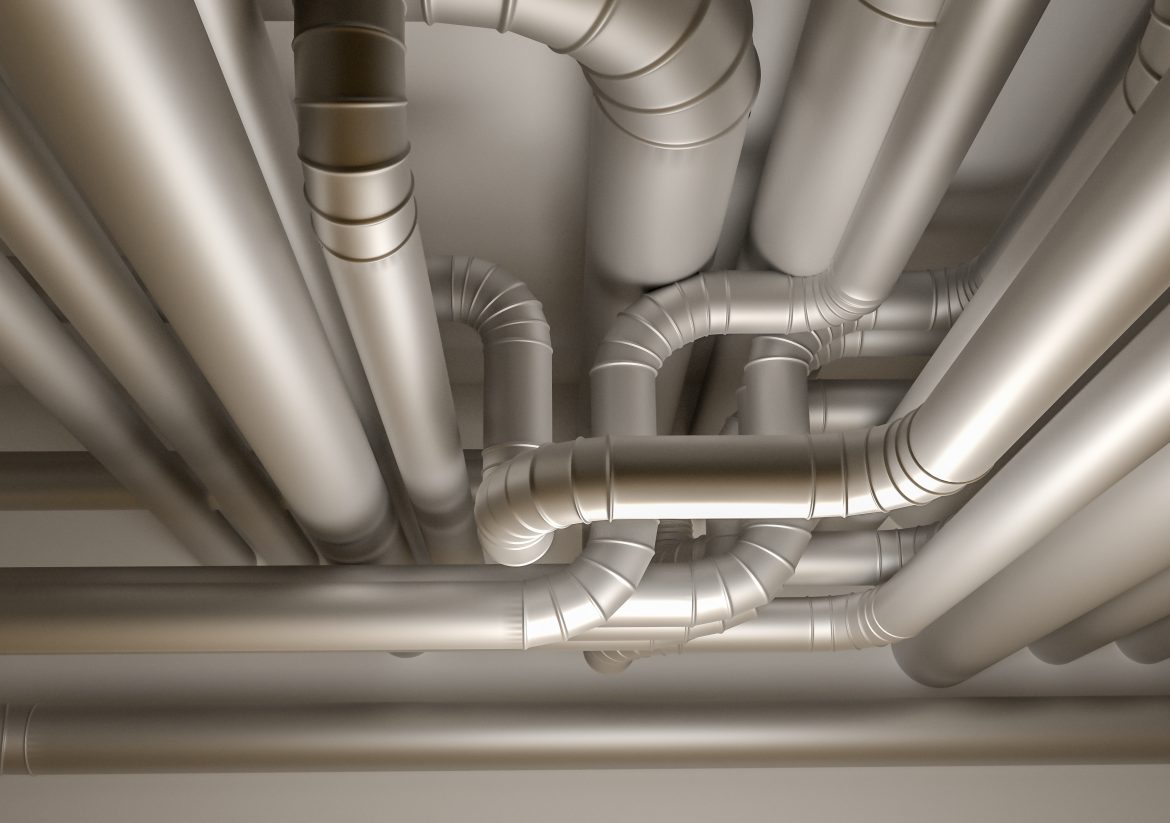How To Install Ductwork

How To Install Ductwork
Adding the ductwork for a room addition is easy. Your careful planning will now pay off as you follow your plan. A word of warning, if you’re installing a supply line, make sure the duct you’re tapping into is a supply duct. The first step is to install a take-off, preferably on either the trunk or a large branch. Use the takeoff as a guide to mark the insulation that must be removed. If you are coming off a duct board surface, you do not need to remove the insulation. Cut away the insulation as needed for the fitting. With the insulation removed mark the area on the surface that has to be cut out. You could use a professional hole cutter, or you could use a metal drill bit to create a hole that allows you to get tin snips into the pipe. Then install the take off.
A contractor will install the unit with sheet metal screws and master flow duct sealant. Before he installs the sealant he pushes back the insulation. Then he reinstalls the insulation around the takeoff, and secures it with a high quality stainless steel gear clamp. Several companies make these clamps such as ideal, Lokman, Hydrofarm, Hitichi, and Tech Team https://techteamproducts.com/. We like the Tech Team 4” clamp https://www.amazon.com/Band-Style-Key-Style-Stainless-Collection-Clothes/dp/B079RSJCJN/ref=sr_1_7?ie=UTF8&qid=1546285381&sr=8-7&keywords=dryer+vent+clamp because it has a handy butterfly toggle to tighten it. Note a damper is installed to help regulate the airflow into the new branch. This will allow us to make adjustments in the volume of air if needed later. You can take the air for your room addition directly from the plenum.
You can also try this. Use the collar to mark the cut out area on the plenum. Cut out the section. Then install the takeoff by bending the tabs inside the plenum. Then install a damper to regulate airflow. Now we are ready to install the branch line. In this example we will install insulated flexible duct work. When connecting flexible duct work to a starting collar or a take-off, the preferable way is to apply mastic uniformly around the collar or sleeve. Slide at least two inches of core over the fitting end and pass the bead. Secure the core to the collar with a 4” Tech Team clamp applied past the bead. Pull jacket and insulation back over the core end, tape jacket with at least two wraps of duct tape.
Although these are standard industry instructions, some codes may require variations. If you are using metal pipe, secure the pipe connection with sheet metal screws, then seal all the seams using mastic or high quality metal foil duct tape. The next step is to install the register box. Your installation may vary. At the register box connect the flexible duct work with duct tape and a clamp in the same way you did at the take-off collar.
In some installations you may need to install a T or Y to branch an existing run, or create two runs. The T moves the air off the trunk line at a 90 degree angle, just as its name says. The Y moves the air at an angle less than 90 degrees. Any other turns in the ductwork will require the use of an elbow. To install the T or Y, cut the flex duct into sections, insert your T or Y, and attach using the same technique as the installation of the branch line to the initial takeoff. If the flexible duct work needs to be extended, or the core has been damaged, you must install a splice. Pullback the insulation from the core, butt the two cores together on a 4” length metal sleeve, tape the cores together with at least two wraps of duct tape on each connection. Then secure the splice with two clamps placed over the taped core ends. Be sure the clamps are mounted past the beads on the sleeve. Then tape the jacket with at least two wraps of duct tape, and perform a simple tug test to make sure the connection is secure.
Common mistakes include having too much slack in the flex duct, or bending it around corners. Also, use the minimum length of flex duct. Don’t leave extra for future construction needs. You can always splice it. For efficient airflow you want to avoid sharp bends and turns. Always install flex duct in as straight a run as possible. Flexible duct should be supported at least every five feet. It can be supported with a variety of hanger straps. This completes the run of your supply line to the room.
It is important for the room to have a return to take the stale air out of the space and return it to the HVAC unit. You can create a return by tapping into a return duct and running duct work to the room. You will typically want to locate your return as far away from the supply vents as possible. For instance, if you’re a supply vent is located on the floor then the return should be on the ceiling on the opposite side of the room if possible. Another option is to use the existing returns if the house is equipped with one or two large centrally located vents. In this case, air will flow out the open door of the new room. You will want to make sure that there is about one inch of space between the bottom of the door and the floor to allow air to pass underneath when the door is closed. To return to the HVAC unit the air must travel through branches, a return trunk line, and finally to the return plenum.
